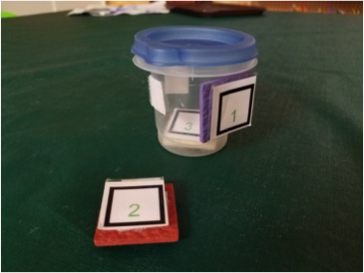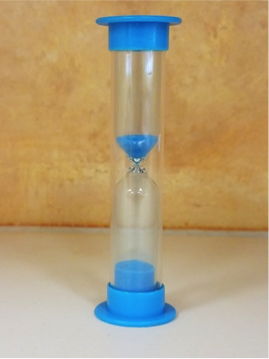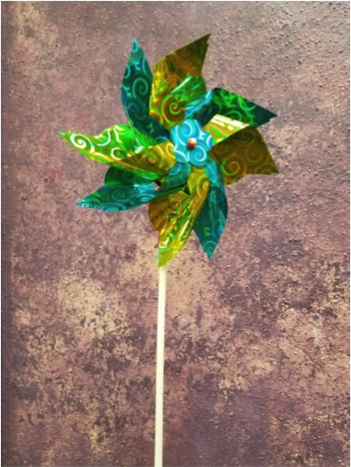Load up your Teacher Toolbox
- Chelsea Hocker
- Mar 7, 2018
- 5 min read
Some classrooms call it circle time, others call it a large group activity. In my classroom we call it a meeting. Whatever you want to call it, it is one of the most common times of day that teachers struggle with helping their students with challenging behaviors. The expectations for behavior are high, and one disruptive student can quickly change the tone of the entire gathering. Keep all the perspective you can in remaining compassionate and curious about those behaviors, but it doesn’t change the daily struggle! Read on for some tangible tools that might ease the chaos and help you get the most out of those priceless group interactions.
Let Them Know What is Coming
In many classrooms, a meeting follows free choice time. It is so important to give children warnings and let them know that they will need to be done soon. I have a warning count-down song that we sing five times in the five minutes leading up to a clean-up session, then we count down to a chime ringing which signals us all to FREEZE! (This can be a helpful tool at other times of day as well)
We always try to find a way to make clean up fun so we don’t get into a bunch of power struggles over clean up time, which will just give the next activity a bad flavor. Sometimes we’re clean up robots, sometimes we vary our speed, and sometimes we add in a musical freeze game. Today we pretended the toys were made of hot lava and we had to wear special gloves to pick them up! I try to make use of the fact that young brains are always seeking novelty and remember that if I can come up with a fresh new way to approach a boring old task, it will go a lot faster.
Transition visuals: As we are moving into clean up time and then towards meeting, I go around and show the kids cards that have a reminder picture of what we’re doing. These visuals are so effective it is like having a magical flashcard in your pocket for some kids. They can be used for so many things, can be carried individually or on a ring, and they pair especially well with a “first/then” card fitted with a few squares of Velcro.
These ones are made on a program called Boardmaker. If you don’t have it, you can just make your own like my teaching team did (bottom left) to help kids with our transition that gets us to lunch.
Count Down Tube (bottom right): Kids can help you to move the numbers that indicate how many minutes are left and watch the countdown happen. You can also do a five minute version of this on a glove.
Satisfy Sensory Needs
Start with a ritual. I think a song is great, but it could be a chant or other repeated activity. Knowing what to expect helps kids to feel safe and powerful, and hearing the same tune or set of words each time will serve as an auditory cue of the expectations of that situation.
Give children the tools they need to be successful in the situation as well. It is not easy for kids to sit and listen, but it can be made much more comfortable with various sensory distractions. The trick is to introduce these items with the understanding that it is to be used as a tool, not as a toy. I remind my students that everyone learns in different ways and has different needs. Some people need more help to sit and listen, some people need to be able to move a little bit. There are a lot of great sensory-need satisfying products made for kids to use quietly and without disruption so that they are able to give their focus to the activity that you worked so hard to plan.
You don’t always have to spend a lot of money getting any fancy tools though. Kids in my class seem to find egg timers very calming, not to mention practical in so many different situations. Any little fidgety toy will work as well as long as it’s not too distracting. You can choose which toys are acceptable in advance. For some kids, having something to hold can really help them focus on the discussion or activity at hand. Others just need a way to move. Last month, my article featured a photo and suggestion of a tool called a Bilibo (bottom right). If you don’t have one of those, just having a kid sit on your knee and subtly bouncing it up and down can give the little bit of needed sensory stimulation so that their brain can engage in the way you are hoping for at that moment.
Make Deep Breathing Fun
Within the four walls of a classroom, most kids are pretty wired – feeding off the energy of all their peers and the exciting materials surrounding them. To make the most of meeting time, they need to calm themselves and focus their energy, and you can help make this a fun ritual of meeting time. There are lots of tools to help teach deep breathing techniques – I’ve referenced one of my favorites - Tucker Turtle, before in a previous article. Another one we do in my class is the Balloon Breath – gesturing with our hands like a balloon growing with each deep breath we take, and then of course the fun part is popping it! We also do one where we pick a flower and blow away the petals, or light a candle and then blow it out after making a wish. There are many creative visualizations you can come up with to meet the interests of your children and help them to relax at the same time. If you need a more tangible tool to get kids to breathe in times of great upset, I recommend a pinwheel or even just a straw with something lightweight to blow in the air. These things require deep breathing by their very nature, and are fun in the process.
One of my favorite teaching memories came from an absolutely insane moment in my classroom where it seemed like everyone was just as wild as I had ever seen them. After looking helplessly at my co-teacher, I grabbed a box of straws and headed for the meeting area. I tempted the kids to sit down by offering them each one of these prized objects, then led them in an impromptu exercise of blowing clouds around in the sky. It was random and silly but it sure calmed the group down and gave us a place to move on from.
I hope that in these tools you can find some assistance in getting children back on track so that you can find that place to move on and grow from together.


















































